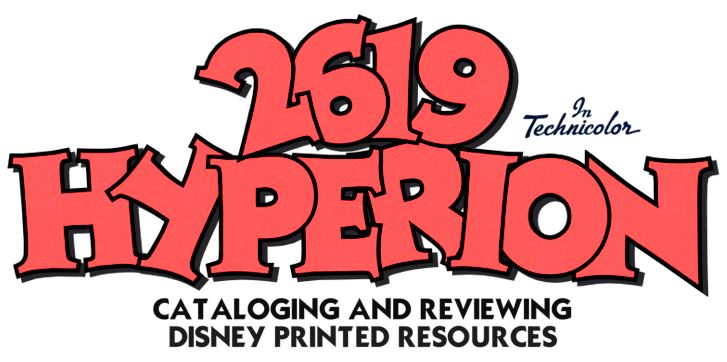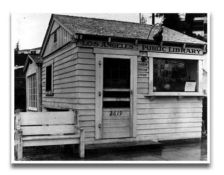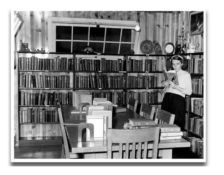 Thomas Schumacher is well known for being a major part of Disney's animation renaissance, serving as president of Walt Disney Feature Animation during the heyday of such efforts as The Lion King, Pocahontas and The Hunchback of Notre Dame. He moved on to become president of Disney Theatrical Productions, producing such Broadway fare as Aida, Tarzan, the Tony Award-winning The Lion King and the upcoming The Little Mermaid. The collaboration between Jeff and Tom was born out of a longstanding friendship as Jeff relates, "I have known Tom Schumacher for almost 25 years now. We've been colleagues and collaborators and just plain pals. I love what he does, and I love how smart he is, and how passionate, creative, and clever he is. He is also a fiercely loyal and protective friend, and has often been a lone supportive soul when my life has been at low ebb."
Thomas Schumacher is well known for being a major part of Disney's animation renaissance, serving as president of Walt Disney Feature Animation during the heyday of such efforts as The Lion King, Pocahontas and The Hunchback of Notre Dame. He moved on to become president of Disney Theatrical Productions, producing such Broadway fare as Aida, Tarzan, the Tony Award-winning The Lion King and the upcoming The Little Mermaid. The collaboration between Jeff and Tom was born out of a longstanding friendship as Jeff relates, "I have known Tom Schumacher for almost 25 years now. We've been colleagues and collaborators and just plain pals. I love what he does, and I love how smart he is, and how passionate, creative, and clever he is. He is also a fiercely loyal and protective friend, and has often been a lone supportive soul when my life has been at low ebb."The genesis of the idea for the book came about four years ago, during a conversation the two friends had in a place not very far from Broadway itself.
"On December 26, 2003, we had taken the "A" Train to Harlem to see a show at the Apollo Theatre. We were walking up Lexington Avenue, and Tom asked me if it was hard to write a book. My first response was 'No, but it's like anything, you never know till you try. Why?'"
Tom then indicated to Jeff, "I want to write a book."
While not necessarily surprised by Tom's revelation, Jeff admits that the subject Tom had chosen wasn't exactly what he expected.
"I thought he wanted to do something about Disney's resurgence in animation in the 1980s and 1990s from an eyewitness perspective, or something lofty about adapting a film to stage."
But instead, Tom revealed, "I want the book I wanted when I was eleven. I want something that explains what theatre is all about, and simply, and joyously, so it's not intimidating or snobby."
Jeff's reaction? "When do we start?"
The two worked on and off on the the project for about a year. "Tom is a VERY busy guy," says Jeff, "but between in-person meetings, e-mails, and phone calls, we developed the book concept and hammered an outline of the book together by about the Fall of 2004. Over the following year, I would work back and forth with Tom on every aspect of the book--he would bring up ideas, I would provide responses and raw materials, he would refine, revise, and rewrite so the information was delivered, but with his charming and unique voice."
Similar in design to interactive tomes such as Robert Tieman's Disney Treasures, Disney Keepsakes and Mickey Mouse Treasures, How Does the Show Go On? is a lavishly illustrated yet still very extensive and comprehensive look at the world of theater, using Disney stage productions such as The Lion King, Beauty and the Beast, Tarzan and Mary Poppins as the backdrops. That style of publication was clearly their intention as Jeff notes, "We looked at a lot of book styles and designs, and we really liked the recent books that becker&mayer! had done with Robert Tieman, and asked them to join the team. Their designers really stepped up, and have delivered one of the most charming and beautiful designs--it really fits with the tone and feel of the writing. The addition of artifacts and objects within the book was a natural, and they really add to the book's value and personality."
The book's chapters are cleverly but still appropriately labeled "Overture," "Act One," "Act Two" and "Encore." The "Overture" instructs you on the basics. The term "theater" is defined and distinctions are explained in regard to terms such a Broadway, off-Broadway and touring shows. A section that describes styles of theaters notes the importance of placing a production in a theater that best suits it.
 "Act One" begins outside the theater, explaining the dynamics of the box office and even provides a diagram of how to read a ticket. To illustrate, facsimiles of a ticket and playbill from The Lion King are incorporated. Readers are then treated to extensive descriptions of all the production personnel, from the director, producers and playwrights to music supervisors, set designers, costumers and even publicists. Another very nice interactive piece is a set of design sketches Julie Taymor did for the "I Just Can't Wait to Be King" number from The Lion King.
"Act One" begins outside the theater, explaining the dynamics of the box office and even provides a diagram of how to read a ticket. To illustrate, facsimiles of a ticket and playbill from The Lion King are incorporated. Readers are then treated to extensive descriptions of all the production personnel, from the director, producers and playwrights to music supervisors, set designers, costumers and even publicists. Another very nice interactive piece is a set of design sketches Julie Taymor did for the "I Just Can't Wait to Be King" number from The Lion King. "Act Two" literally takes readers backstage and walks them through the creation of a Broadway production, from initial conception right up to opening night. The technical side of the process is given extensive attention, covering all the various nuances of the stage from special effects to lighting to wardrobe. Did you know that there are four different types of curtains? Or that the term "limelight" had it origins in the stage lighting that predated electricity? These are just a couple of the many, many enlightening pieces of information imparted by the authors.
"Act Two" literally takes readers backstage and walks them through the creation of a Broadway production, from initial conception right up to opening night. The technical side of the process is given extensive attention, covering all the various nuances of the stage from special effects to lighting to wardrobe. Did you know that there are four different types of curtains? Or that the term "limelight" had it origins in the stage lighting that predated electricity? These are just a couple of the many, many enlightening pieces of information imparted by the authors.Especially notable is the book's price, just $19.95. "The fact that Tom has worked to keep the cost of the book under twenty dollars is pure genius and absolute commitment to his medium," comments Jeff. "He wants this book in kids' (and grown-ups') hands so that a new generation of kids will be attracted to bringing their talents and enthusiasm to the theatre."
While How Does the Show Go On? may seem to have been generally created to serve a more youthful readership, it is equally deserving of attention by adults as well, something that Jeff agrees with. "That's a great thing about the way Tom has written this book--it's accessible enough for kids, but it's not a "children's book"--adults will find as much to enjoy and inform them as a kid will."




0 comments:
Post a Comment